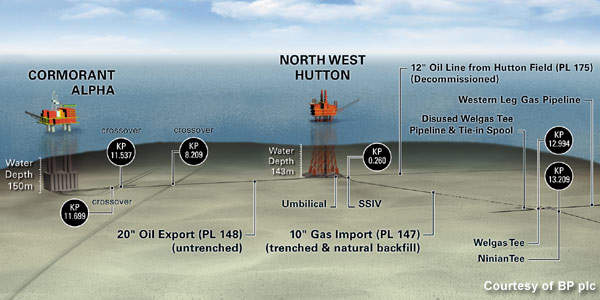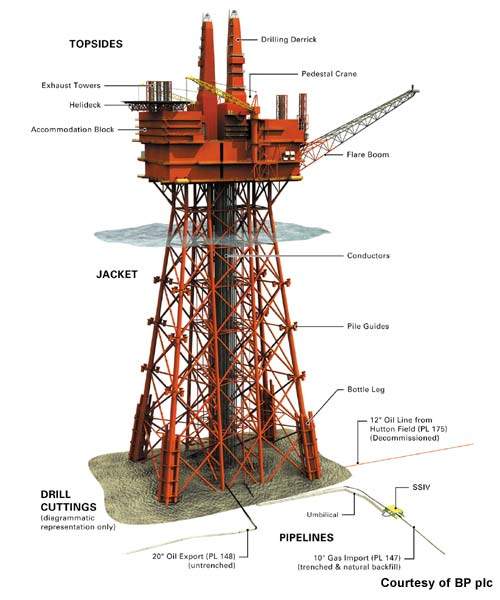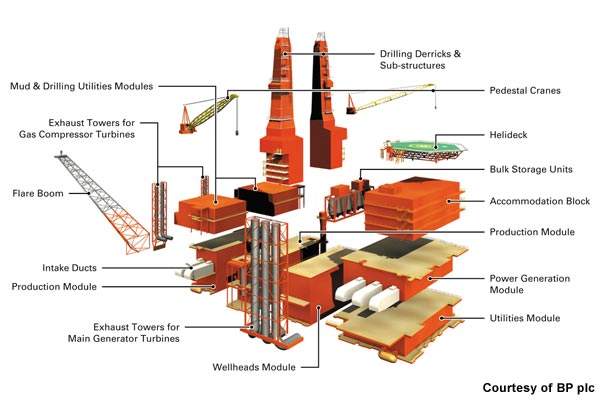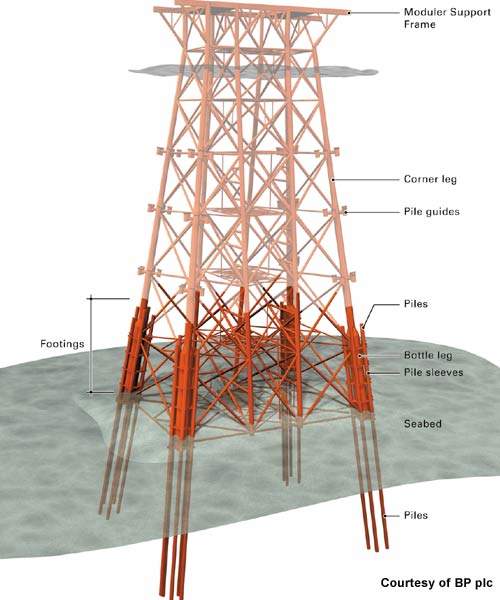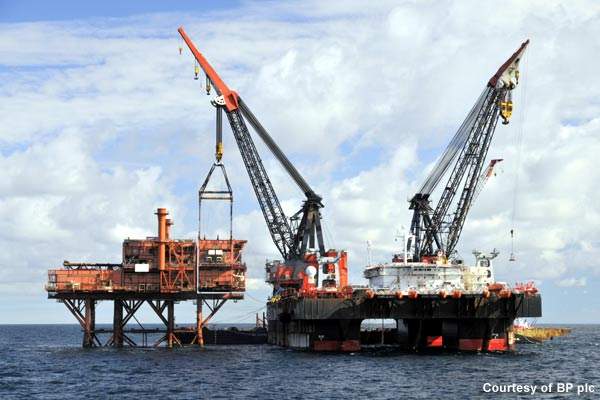The North West Hutton field is located 130km north-east of the Shetland Islands in Block 211/27a in the UK North Sea. It is situated at a water depth of 143m. Discovered in 1975 by the Amoco Group and operated by Amoco (UK) Exploration Company, the field had total estimated reserves of 487 million boe.
The North West Hutton steel jacket platform was installed in 1981 and production began in 1983. However, in 2002, production on the field had to be ceased as orders of the UK Government, following numerous studies, declared that no more reserves could be recovered from the field.
On 1 January 2003, production from the North West Hutton field was ceased officially. The decommissioning works are now in progress.
In 2005, the OSPAR consultation was completed. The DTI approved the decommissioning programme of the North West Hutton installations in 2006.
The decommissioning requires the removal of the topsides for reuse, recycling and disposal onshore, the removal of the steel jacket down to the top of the footings for recycling and re-use onshore leaving the jacket footings, the drill cuttings pile, and the import pipeline to be left in place, and the export pipeline to be trenched and buried, removing its ancillary and protective equipment.
The decommissioning involves three separate programmes for the removal of the facilities. Under Programme 1 (platform and associated equipment), the topsides, drilling template and the drill cuttings would be removed, recycled and reused onshore. Programme 2 (Pipeline PL 147) will include the trenching and burial of the 10in gas import pipeline and associated pipeline support equipment. Programme 3 (Pipeline PL 148) will include the trenching and burial of the 20in oil export pipeline and associated support equipment.
These recommendations were finalised after the assessment process, studies by an independent review group and stakeholder consultation.
In October 2006 British Petroleum (BP), on behalf of the field owners, awarded a contract to Heerema Marine Contractors for decommissioning the North West Hutton installations. Detailed engineering for decommissioning began immediately. The offshore removal is expected to be completed by the end of 2010.
The field owners were Amoco (UK) Exploration Company, a subsidiary of BP Plc, with 26% of the field, CIECO Exploration and Production (UK) Ltd with 26%, Enterprise Oil (UK) Ltd with 28% and Mobil North Sea Ltd with 20%.
In 2009 the topsides were removed and detailed engineering activities were completed. The remaining activities include the jacket lift preparation and removal, the disposal of topsides and jacket, pipeline trenching and burial activities, and subsea surveys.
In September 2009, Fairfield Energy entered into an agreement with the field owners to acquire a package of assets in the UK North Sea including the North West Hutton field. The agreement includes the interests in licence P184 in Block 211/27a and licence P474 in Block 211/27c, subject to the approval of the UK Government. Fairfield plans to redevelop the area and expects to tap the remaining proved oil reserves using advanced technology. Amoco (UK) Exploration Company, CIECO Exploration & Production, and Enterprise Oil and Mobil North Sea are selling their interests in these assets.
The studies conducted by Fairfield’s engineers revealed that the field area can be redeveloped and the remaining estimated reserves of the field can be tapped.
Geology and reserves
The North West Hutton field has a complex geology of rock formations containing oil and is lower than similar North Sea fields.
After the discovery of the field, it was declared that its total estimated reserves were 487 million boe. It could recover only 126 million boe of the total estimated reserves, after which production operations ceased.
Floating platform
The North West Hutton platform is the only integrated oil and gas drilling, production processing and accommodation facility on this field. It includes topsides, jacket, pipelines and drill cutting piles.
The topsides of the platform included 21 modules and seven caissons weighing about 20,000t. It comprised of wellhead modules, production modules, utilities modules, drilling derricks and substructures, an accommodation block and a helideck.
The jacket on which the platform rests weighs about 17,500t including the weight of the piles above the seabed. A steel template was installed under the seabed weighing 290t wherein the jacket was positioned using steel piles.
The footings extending 40m above the seabed consist of the lower part of the jacket including legs, bracing and piles that accounted for about 50% of the jacket’s weight.
The drilling cuttings pile of the platform is of rock cuttings resulting from the drilling operations. The pile consists of 30,000m³ of oil and water-based drill cuttings along with seawater covering a small area of 0.02km². It extends 20m to 70m crossing the jacket legs.
Pipeline
The oil and gas produced in this field were transported through the 10in gas pipeline (PL 147) and the export oil pipeline (PL 148).
The PL 147 is 13km long and was used mainly to export gas to the gas transportation system located towards the south of the platform. In 1994, it was connected to the Ninian field gas export line allowing North West Hutton to import gas for fuel. It was trenched and buried 0.45m below the seabed.
PL 148 was mainly used to export oil and natural gas liquid (NGL) from North West Hutton to Cormorant Alpha.

